#nauvoo illinois
Explore tagged Tumblr posts
Text

Nauvoo, Illinois
photo: David Castenson
245 notes
·
View notes
Text
Nauvoo Illinois 🏞️⛪📖


Just got back from a Long trip to Nauvoo Illinois. 😃✨ It was a very cool experience seeing all the old church history sites and learning about the testimonies and efforts of the Saints that lived there.
What was especially cool was checking out the new sites that the Church had recently acquired. 👀 Especially the Red brick store. Which was where the Relief Society—One of the Largest and Oldest Women's organizations in the world—was established on March 17, 1842.
Pretty cool stuff 😎 ✨ Maybe a bit too cool, since ya boi Toasty got caught trying to sneak into the Relief Society meeting 😅

(Tried out something a little different with these illustrations using some of the pictures I took as backgrounds. I'll probably try to do some more with the pictures in future works too. 👀)
#cats#cartoon#character art#furry#furry art#art#digital art#illustration#nauvoo#illinois#historical sites
6 notes
·
View notes
Text
A snippet from Nauvoo, Illinois: Quiet Reflections.
You have one day to catch up before another episode drops tomorrow.
Make sure you follow the @thestorypilgrim #podcast for all the latest episodes.
Please and thank you.
#podcast#storytelling#story#travel#new episode#podcaster#podcasting#nauvoo#illinois#church of jesus christ of latter day saints#the church of jesus christ of latter day saints#mormon#mormon temple#lds church#mormon history
0 notes
Note
Would you mind sharing the psalm and why you felt that person was the most humanist Mormon? I'm not religious at all but I find these sort of things very interesting.
In exchange I could offer the reason for my url ?
I'm warning you, this is kind of a mega essay, and it's fucking unhinged. Click at your own risk.
(Alright. You clicked.)
Psalms 137
By the rivers of Babylon we sat and wept
when we remembered Zion.
There on the poplars
we hung our harps,
for there our captors asked us for songs,
our tormentors demanded songs of joy;
they said, “Sing us one of the songs of Zion!”
How can we sing the songs of the Lord
while in a foreign land?
If I forget you, Jerusalem,
may my right hand forget its skill.
May my tongue cling to the roof of my mouth
if I do not remember you,
if I do not consider Jerusalem
my highest joy.
Remember, Lord, what the Edomites did
on the day Jerusalem fell.
“Tear it down,” they cried,
“tear it down to its foundations!”
Daughter Babylon, doomed to destruction,
happy is the one who repays you
according to what you have done to us.
Happy is the one who seizes your infants
and dashes them against the rocks.
———
Mormonism has layers. Different cores of believers, cultures within itself. The largest group of Mormons also dominate its image within the larger culture. You know them as the nerdy, cheerful, bubbly dorks on South Park, or the hopelessly naive childlike weirdos from the Book of Mormon musical. Strangely sanitized, "wholesome" people that are, clearly, unwhole. Missing some essential part of the human experience.
(Pain, maybe?)
I think that embracing this image is letting Mormonism view itself as what it wishes it was. A group with all its rough edges sanded off, all its raw and desperate humanity scrubbed away. A clean and godly and slightly unsettling image of joy.
That isn't how it started.
Now, most people know the story of Joseph Smith. Fourteen year old farm boy starts a cult because the whole world if full of idiots, I won't repeat it because you've probably already got it from South Park. But at some point that weirdo cult did become a religion, and I would point to that moment as the Mormon War of 1838.
I don't know how far after the founding that was. Enough that Joseph Smith was a grown man. Enough that the Mormons had around 15-25 thousand members. They'd moved to the Illinois-Missouri area and were establishing settlements.
(They creeped the locals out. Of course they creeped the locals out.)
Eventually, they got pushed out of the county they'd claimed. Jackson County, it was. The state couldn't actually take that county from the people that expelled them, so to try and make the Mormons "whole" for the land they'd bought (ignoring the houses and farms they'd already set up) it gave them a new county.
Next election that came around, that county was sieged. Voting was blocked. Now, the people of the state were terrified that this weirdo voting block was going to take them over. They probably weren't wrong. Some former Mormons had straggled in from the county revealing a frankly corrupt land dealthat the early church had used to transfer resources to itself, and that served as a tipping point. To prevent their state from becoming a religious basketcase, a mob sieged the Mormon county during the next election.
The state tried to return order by sending the militia in to break up the siege, but the militia mutinied. They joined the siegers. A ground of strange, extremist violent Mormons known as the Danites rode out and attacked local settlements that were known to house the families of the militia members.
The Governor at the time - Lilburn Boggs - sent out an executive decree. The Mormons were traitors, and were to be killed on sight. It is the only religion in the US to have ever had such an order made against it.
The Mormons surrendered their county and went to Nauvoo, Illinois. There were again expelled from that city in 1846, and traveled west.
They died in great numbers and they never forgot the homes they lost.
———
I tried to tell the story as sympathetically to the people of Missouri as I could. The Mormons made messes wherever they went, and they unsettled everyone they interacted with. But they were attacked as well, and had a history of violence against them. It should not be totally surprising that they became insular and strange.
Many (most?) Mormons that learn all of their history wind up leaving the religion. It has twists and turns and knots and it is incredibly, overwhelmingly human. I think that's where the facade of Mormon perfectionism comes from - the shame of that. The desire to be something else. But being human is all I've ever wanted. And occasionally, there are people faithful in the church - layers upon layers deep - that know their history.
And they are angry about it.
I think it's more common than people realize. Did you know that until 1930 Mormons swore literal religious oaths of vengeance against the US government for the deaths of Joseph and Hyrum Smith?
I always felt like these were, in some way, the real Mormons. They knew their history, and they loved their church, and they hated what it had suffered all those years ago.
They scared me, those people. But they seemed complete. More complete than the people that had carved out everything that didn't make them smile. They'd walked into the mirror, and touched their shadow, and danced with. Melded with it.
And I knew a few like that. I was taught by one. And he didn't convince me, but he interested me. Gave me some respect for the people I left behind.
———
In the game Fallout: New Vegas, there is a character named Joshua Graham. He's a Mormon. Not like the silly children in adult bodies that they always use on TV. He has gravitas. He has put away his moral compass before, to pursue the dream of one powerful man. Poured his soul into it, helped that man conquer the whole west in piecemeal. He's a somewhat on the nose analogy of the Mormon people themselves, following Joseph Smith. And when he finally failed, when he fought a battle he could not win on the gates of the Old World Hoover Dam, he was lit on fire and thrown into the Grand Canyon to die.
But he did not die.
He says he survived because the fire in him burned brighter than the fire around him. And it seems that way when you speak with him in game. There is something compellingly bright to him. Not shiny like a new toy, or a Utah teenager that hasn't seem just how grim the world can be. He's something blinding, compelling.
But that brightness casts shadows.
He is vicious. He was saved in the canyon by the family he left, the old Mormons of a new world. And he's trying to find that part of him again, regain the soul he lost pursuing someone else's vision. But that old vicious animal part of the covenant is with him. I see Joshua Graham and I see the animal that the Mormons became to survive the West.
And in the game, there is eventually a choice given.
You can lead the tribe Joshua has joined up with out of their Zion. Their Jackson County Missouri. Peacefully and perfectly and inhumnanly transcendant, the way the Mormons wish they actually were about everything. You can give him the chance to be what Mormonism has always wished it could be. Or you can fight with them and help them reclaim their paradise, but get your hands stuck deep in the muck of this world.
Joshua Graham knows his history. He knows all the homes his people lost. And whatever brightness he's trying to regain, whatever soul he's trying to win back from the world that takes and takes and takes and takes - he wants to give it all up again to let these people keep their home.
He knows his past and he is angry.
And as the player, you help him make peace with one of two things: Being human by being fallen, or keeping his soul at the cost of reliving the ancestral trauma of losing Zion yet again.
Both were pretty visceral decisions for a Mormon teenage Babylon to make.
(Tagging @boonebignaturals in this because I need a witness to my madness.)
#fallout new vegas#joshua graham#mormon history#character study#i'm biting the walls a little bit right now#bite bite bite#exmormon stuff#mormon stuff?#i don't actually remember the history too-too well#this was taught to me in large part my that crazy-ass old seminary teacher#bless him
287 notes
·
View notes
Note
book recommendations on mormon history?
oooh worm. very excited. I'm going to focus for now on what I would consider the best introduction books to Mormon history (of the ones I have read).
the number one book I would recommend for people who know little to nothing about Mormon history is American Zion: A New History of Mormonism by Benjamin Park. I think it is an excellent new entry to help fit a much-needed niche of "overview broad-brushstrokes history of Mormonism that is not written from an explicitly faithful perspective." (The author is LDS, but it's definitely written to appeal to secular audiences in a way that the other existing overview books which are mostly church-produced are not.) It goes from Joseph Smith all the way up until Mitt Romney, essentially.
If you want something that goes a little bit deeper and doesn't cover quite as much time, I actually would also recommend Dr. Park's other book, Kingdom of Nauvoo, which covers the period of Mormon settlement in Illinois from 1838-1846, including the advent of polygamy and Joseph Smith's assassination. The Nauvoo era is really interesting and arguably the most crucial period in very early (pre-Utah) Mormonism.
For a narrower focus within the Nauvoo era, American Crucifixion: The Murder of Joseph Smith and the Fate of the Mormon Church is also pretty good and is a very accessible read. Joseph Smith for President: The Prophet, The Assassins, and the Fight for American Religious Freedom covers a lot of the same ground. I would still recommend these books for Mormon history "beginners" because Joseph Smith's life and death is so pivotal.
In terms of reading more about Joseph Smith, I would recommend Fawn Brodie's biography No Man Knows My History, with some caveats. I think this is a beautifully written book and a lot of the scholarship does hold up, but a) it was written in the 1940s b) it was written by someone who was in the process of leaving Mormonism and definitely takes the position pretty stridently that He Made It All Up and it's controversial within Mormon history as a field because of that. There have been other biographies of JS written since Brodie: Dan Vogel's is good but extremely dense, and Richard Bushman's I have not read so I don't feel like I can recommend it. (Side note: I think it is very difficult to write biography about Joseph Smith because the question of whether or not the author believes he was a prophet and the subsequent question of whether or not the author believes he believed he was a prophet is really omnipresent. I don't think you can really evaluate his life and work without also evaluating the truth claims of Mormonism as a religion in a way that is not quite as true for subsequent church leaders.)
Speaking of subsequent church leaders, I would really strongly recommend Brigham Young: Pioneer Prophet by my former professor John Turner, who is really getting gassed up on this blog today, lol. Great bio of the man who shaped Mormonism more than anyone except Joseph Smith (and, arguably, just as much as Joseph Smith.) I actually think this would work fantastically as an overview too because Brigham Young joined the church very early so you basically get a front row seat from origins well into the Utah period.
I wish I had more intro recs about the Utah period or about Mormon women's history/polygamy, but a lot of what I've read on that is either really niche in focus or really dense, so I'm not sure it is a great place to start. That being said, if you want a female perspective on early Mormonism, you should read Mormon Enigma: Emma Hale Smith which is a biography of Joseph Smith's legal wife. It's a great book and was a really ground-breaking classic in Mormon history that imo totally changed the mainstream LDS narrative about Emma.
14 notes
·
View notes
Text



Memorial of the inhabitants of Nauvoo in Illinois, praying redress for injuries to the persons and property by lawless proceedings of citizens of Missouri (Joseph Smith, et al)
Record Group 46: Records of the U.S. SenateSeries: Committee Papers of the Committee on the JudiciaryFile Unit: Petitions and Memorials Referred to the Judiciary Commiteee Relating to Various Subjects in the 28th Congress
To the Honorable the Senate and House of Representatives [large and bolded] of the United States in Congress assembled The Memorial of the undersigned inhabitants of Hancock County in the State of Illinois respectfully sheweth: That they belong to the Society of Latter Day Saints, commonly called Mormons, that a portion of our people commenced settling in Jackson County Missouri in the Summer of 1831, where they purchased lands and settled upon them with the intention and expectation of becoming permanent citizens in Common with others. From a very early period after the Settlement began, a very unfriendly feeling was manifested by the neighboring people; and as the Society increased, this unfriendly Spirit also increased until it--- degenerated into a cruel and unrelenting persecution and the Society was at last compelled to leave the county. An account of these unprovoked persecutions has been published to the world, yet we deem it not improper to embody a few of the most prominent items in this memorial and lay them before your honorable body. On the 20th of July 1833, a mob collected at Independence, a deputation or Committee from which, called upon a few members of our Church there, and stated to them that the Store, Printing Office, and all Mechanic Shops belonging to our people must be closed forthwith, and the Society leave the county immediately. These conditions were so unexpected and so hard, that a short time was asked for to consider on the subject before an answer could be given, which was refused, and when some of our men answered that they could not consent to comply with such propositions, the work of destruction--- commenced. The Printing Office, a valuable two story brick building was destroyed by the mob and with it much valuable property; they next went to the Store for the same purpose, but one of the owners thereof, agreeing to close it, they abandoned their design. A series of outrages was then commenced by the mob upon individual numbers of our Society; Bishop Partridge was dragged from his house and family where he was first partially stripped of his clothes and then tarred and feathered from head to foot. A man by the name of Allan was also tarred at the same time. Three days afterwards the Mob assembled in great numbers, bearing a red flag, and proclaiming that, unless the Society would leave "en masse" [underlined], every man of them should be killed. Being in a defenceless situation, to avoid a general massacre, a treaty was entered into and ratified, by which it was agreed that one half of the Society should leave the county by the first of January, and the remainder by the first of April following. In October, while our people were gathering their crops and otherwise preparing to fulfill their part of the treaty, the mob again collected without any provocation, shot at some of our people, whipped others, threw down their houses, and committed many other depredations; the members of the Society were for some time harassed, both day and night, their houses assailed and broken open, and their women and children insulted and abused. [Full transcription at link]
36 notes
·
View notes
Text
Since it's not going in my article due to space constraints, i'll share a bit about Jane Manning James here. It won't be superfleshed out atm bc it got cut. I plan to do more later. As I am *Reorganized*, writing this for a Community of Christ publication, i researched Ld-S shared history to the point of Nauvoo. my article doesn't follow west (technically). the main resource was an LDS one (thank you v much for your freely available archive) asking about her time with the prophet of the Restoration.
Jane Manning James
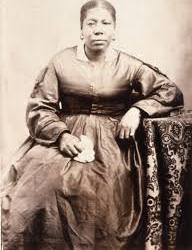
A significant Black Latter Day Saint from the early church was Jane Manning James. A woman from Connecticut notably made the walk from Buffalo, New York to Nauvoo, Illinois on foot, with most of her family. This was only after being separated from the group of recently converted latter day saints in Buffalo, possibly due to their race. Jane was baptized in 1842 by missionaries in her home state of Connecticut. She recorded these things about her journey and arrival to Nauvoo and her faith when asked to recall her life living with Joseph Smith in 1905.
“When I went there [Nauvoo] I only had two things on me, no shoes nor stockings, wore them all out on the road… They [Joseph and Emma] was looking for us because I wrote them a letter. There was eight of us, my mother and two sisters and a brother and sister-in-law, and we had two children, one they had to carry all the way there, and we traveled a thousand miles.”
She was sure in her belief of the Restored Gospel of Jesus Christ and Modern Prophecy. She says in her recollection, after seeing that Joseph Smith Jr was indeed the man in her vision in Connecticut, that “This is the Gospel of Jesus Christ and there will never be any other on earth. It has come to stay.” Sister James would later go west with the saints under the leadership of then Apostle Brigham Young.
--------
me tumblr posting again:
thank you for the example set Sister James on faith, dedication, and perseverance. She also had spiritual gifts, such as speaking in tongue and faith healing. She believed following the gospel, knowing it was a key to a better way of living life (for her.) it wasn't easy for her, and yet, i think the faith community i observe today (and mormonism in general) is better, just for her having lived it.
may she be at peace, and in a manner God, Sister Jane herself, and her family she led that meant so very much to her, see fit.
#the church of jesus christ of latter-day saints#latter day saint#afrostake#tumblrstake#mormon#mormon history#mormonism#religion#they dont mention anything about sealing bc we don't have it#most reorg saints don't know it exists nor that it was ever practiced#its simply assumed that will be the case. that your family will be there (and that there will be work to be done)#so i say it is unlikely that Sis Jane is actually eternally sealed to the Smiths as a servant bc God is no respecter of persons#who even said that Joseph is in the CK. he could be in the Telestial Kingdom rn as we speak. depending on how time / resurrection day works#Jane may be in the CK maybe having a sisterly relationship with Emma if that's how the afterlife works#i also don't believe the kingdoms are permanent. as a side note. if Joseph Jr ain't there i think he can be in God's time.#and josephites (reorganized saints) don't have a way to report card which kingdom they'll go too#and nobody talks about it bc its the afterlife and community of christ doesnt focus (or sometimes doesn't even care) about the afterlife#i've heard it talked about in depths twice and in general maybe 4-5 times. know a brother i meet with weekly who is newly widowerd#no one seems to think the work is over and that we well still be working and progressing in our faith helping others progress after death#that one is cultural - may come from common unwritten- early lds belief since L-dSaints have a new direction and more developed idea of thi#but for the sake of all sakes#can they not reseal her?#certainly a prophet could - listening to Gods call of liberation - see the symbolism and cultural moment that could be#or does post mortem sealing go off the rails? i don't go here. its often sweet and i think harmful in some ways too. JS Jr would Just Do It#but alas - i dont think emma should be involved with any of that. she wouldn’t want to do anymore sealing#i just think if you can do a baptism after death why not a sealing. but doing one would perhaps open a floodgate?#but perhaps its time for those many church generation Black families to be able to have that with they're bygone relatives#once i gave a mourning period & lively death procession & lively dance celebration on the alantic coast to#to honor all my ancestors/ predecessors who were killed and thrown into the sea or would rather die than be enslaved and jumped#danced in the same ocean they died in and dumped (state park approved) flowers into the sea
5 notes
·
View notes
Note
If I know of (through family) an Allred family in Utah that are mormons, should I be concerned and keep my distance or is that just a common mormon last name and there may not be a connection to anything insidious
Lol the short answer is yes, it is a very common Mormon last name and you probably don't have anything to worry about unless they're being blatantly weird.
Allred is one of those Mormon family names that have been around since the literal formation of Mormonism, I've been able to trace Christine (Allred) Brown's ancestors straight back to Nauvoo, Illinois (where Mormonism kind of became official). And a big chunk of the Allreds did not denounce polygamy along with the mainstream Latter Day Saints back in 1890, meaning they have been having these polygamous mega-families for decades, so the family tree is more like a dense forest lol.
Because they've been around so long and because there are so many of them, the name is pretty present in the mainstream Mormon church as well, and of course others have left the religion entirely. It's likely the ones you know of are LDS, although if you get a chance to pick their brains and find out otherwise, feel free to let me know 👀.
#i am completely normal about mormon last names and family trees#i definitely do not have pictures of christine's nauvoo relatives saved on my computer for no discernable reason#👀#mormonism#AUB#fundamentlist mormonism#the allred family
8 notes
·
View notes
Text







1) Seoul, South Korea
2) Orlando, Florida
3) Nauvoo, Illinois
4) Mesa, Arizona
5) Idaho Falls, Idaho
6) Ogden, Utah
7) Brigham City, Utah
#lds church#lds church is true#lds general conference#lds living#lds messages#ldslife#learn of him#come unto him#hear him#follow
2 notes
·
View notes
Text
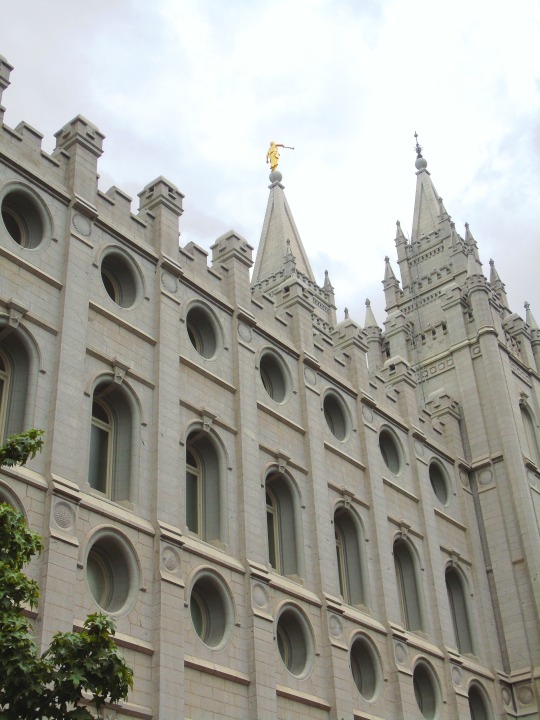
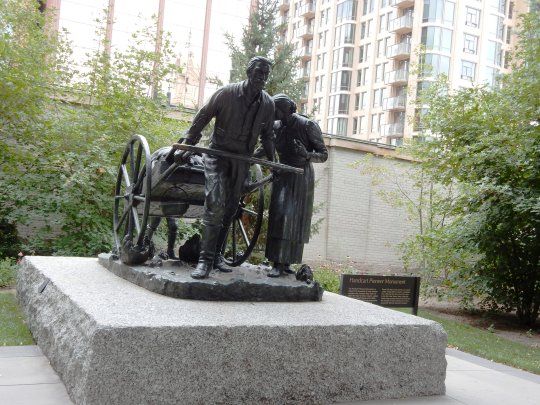
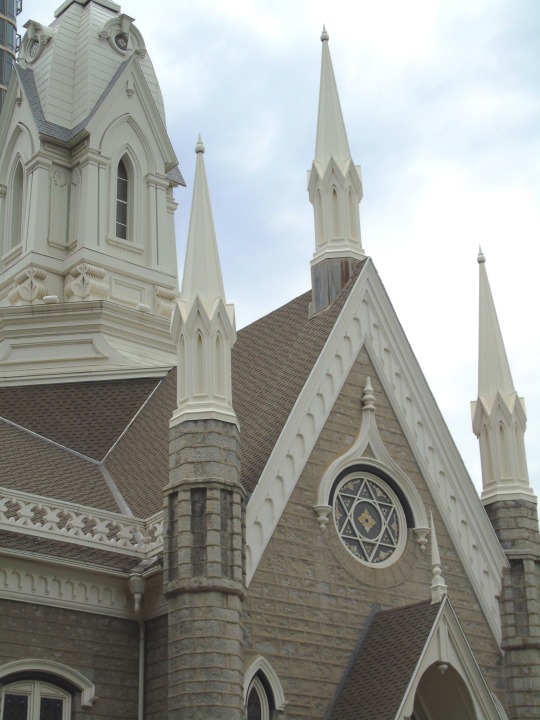
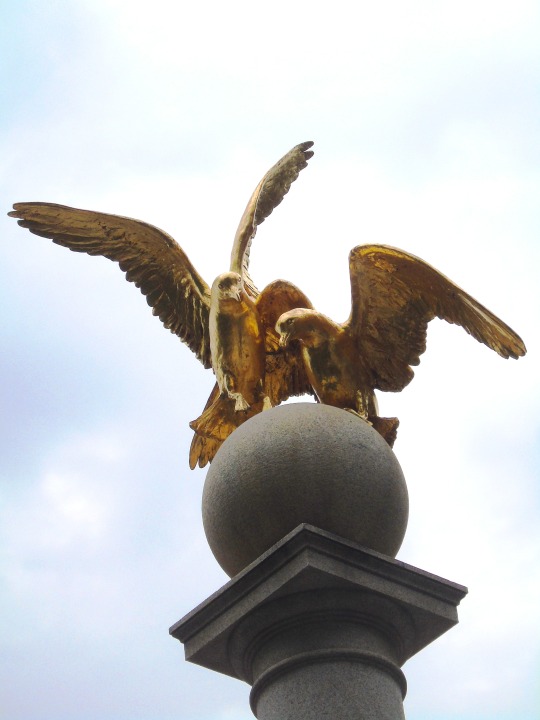
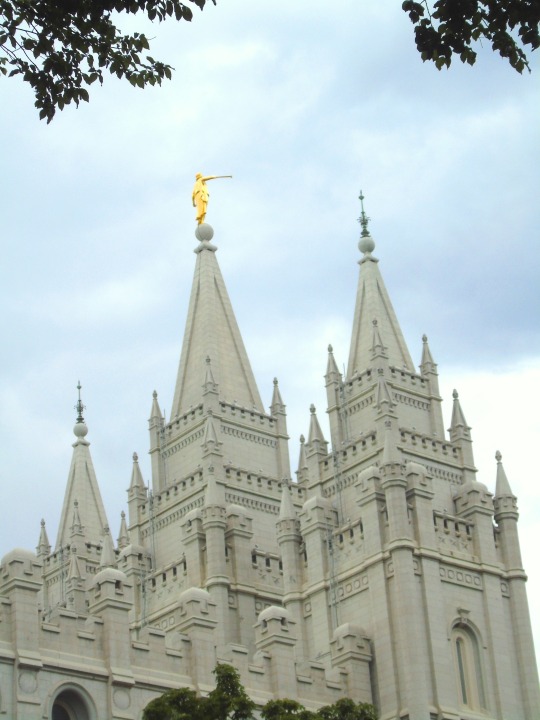
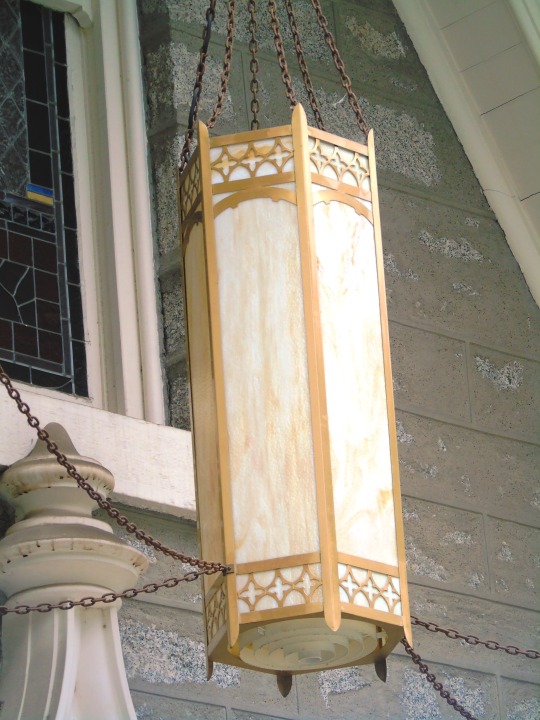
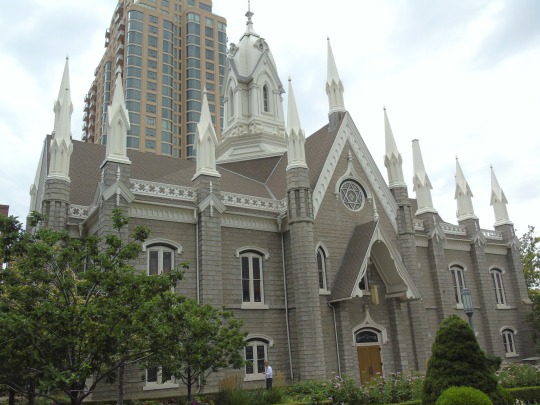
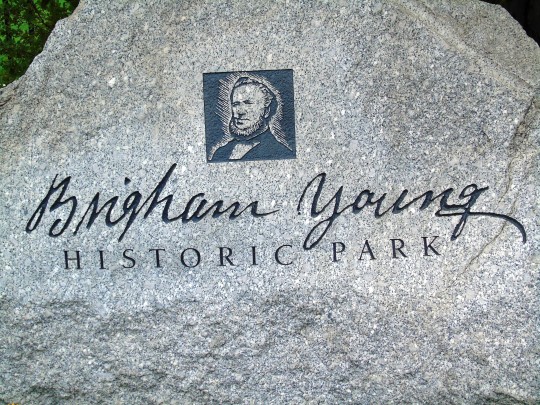
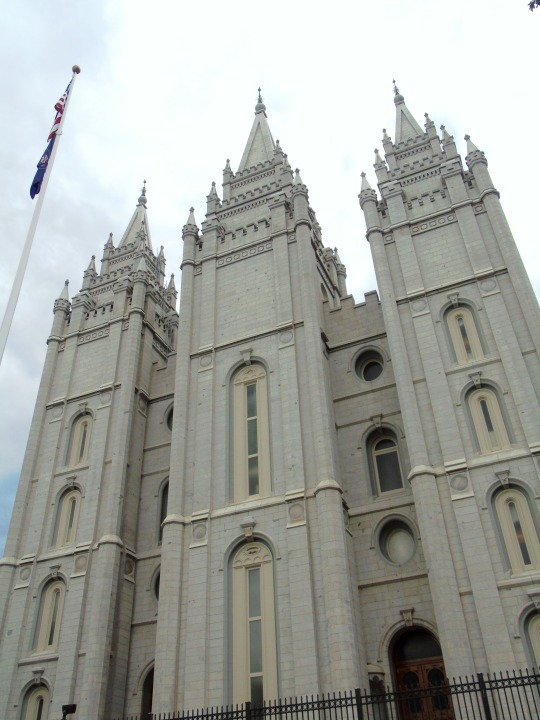
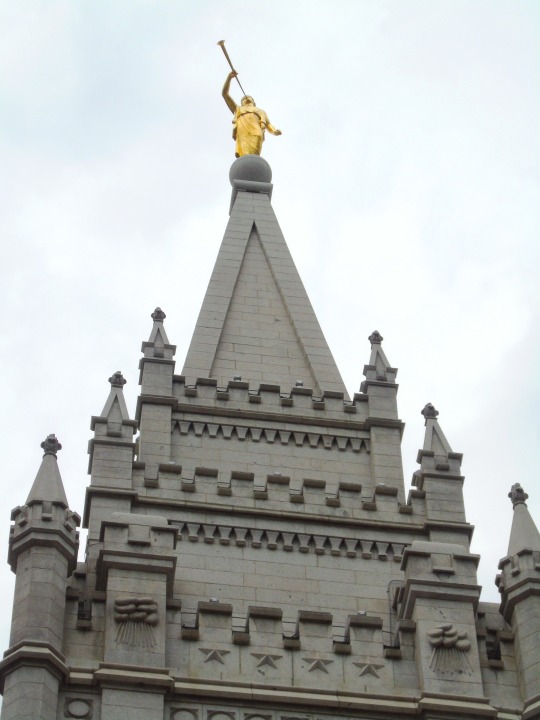


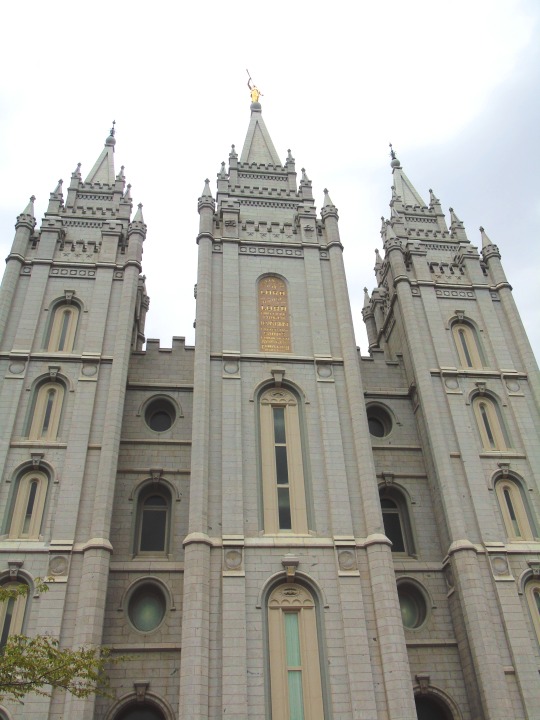
Church of Christ, the original church of the Latter Day Saint movement, was organized by Joseph Smith and others at either Fayette or Manchester, New York on April 6, 1830.
The Reorganized Church of Jesus Christ of Latter Day Saints, later renamed Community of Christ, is organized by Joseph Smith III and others at Amboy, Illinois on April 6, 1860.
The Salt Lake Temple of The Church of Jesus Christ of Latter-day Saints was dedicated by Wilford Woodruff on April 6, 1893.
Church of Latter-day Saints Day
It was on April 6, 1830, in Fayette, New York, that a small group led by Joseph Smith organized the "Church of Christ," the first church of what would become the Church of Jesus Christ of Latter-day Saints (LDS). The anniversary date of April 6 has become known as Church of Latter-day Saints Day.
Joseph Smith claimed that an angel named Moroni visited him in a vision in 1823 and told him about a Hebrew text that had been lost for 1,500 years. The text recounted the story of Israelites who had lived in the Americas during the time before Christ and had prophets similar to those in the Old Testament. Smith said he was told the text had been engraved on gold plates in the fourth century by a Native American historian, and that the plates were buried in a nearby hill. He said he excavated them four years later after Moroni told him where they were. Smith translated the text into English and it was published as The Book of Mormon in 1830, the same year he organized the church. On account of this book, members of the church are often called Mormons, although the church discourages the use of the term.
The church taught there would be a Second Coming of Christ which would be followed by a "1,000-year reign of peace." Because of this, Smith wanted to establish a "Zion," or kingdom of God, in the western United States. Mormon communities were set up in Ohio, Illinois, and Missouri, with the latter being chosen as the location for Zion. In 1839, Smith founded the city of Nauvoo in Illinois. The group there faced hostility from non-Mormons, and after Smith pushed back against dissidents within the church, the hostility and resentment from non-Mormons heightened even more, and Smith was arrested. Smith and his brother were murdered in a jail cell by an anti-Mormon mob in nearby Carthage, Illinois, on June 27, 1844.
Smith's successor as church president, Brigham Young, set out from Nauvoo and headed west with a group of 148 Mormons in 1846. They arrived in Salt Lake Valley in present-day Utah in July 1847. Young said, "this is the place," and the group settled. Young sent missionaries across North America and Europe, and new members were encouraged to move to Utah.
The settlement applied for statehood in 1849 and was denied, but Young was made governor of the new Territory of Utah. Further efforts to gain statehood in the 1850s went nowhere once it became publicly known that Mormons practiced polygamy and that they wished to form a theocratic government. Then, the Mountain Meadows Massacre took place, during which Mormons killed members of a wagon train. In response, the military arrived and a non-Mormon governor was put in charge of the territory.
Young died in 1877 and church leadership was taken over by John Taylor, and then by Wilford Woodruff. In 1890, during Woodruff's presidency, the church announced it was banning polygamy in the United States, in order to follow the country's law. (Polygamy was still allowed outside of the United States and it continued in locations like Mexico.) Utah was admitted as a state in 1896.
Today there are members of the Church of Jesus Christ of Latter-day Saints all around the world. In the early twenty-first century, church membership was at about 16 million. The church is still headquartered in Salt Lake City, Utah, and more members reside in the United States than in any other country. Over 150 groups have sprouted off of the LDS for various doctrinal and political reasons. The biggest is the Community of Christ, which was known as the Reorganized Church of Jesus Christ of the Latter-day Saints until 2001. It is headquartered in Independence, Missouri, the location that Smith had designated as Zion.
The Book of Mormon and the King James Version of the Bible are the two most important texts in the Church of Jesus Christ of Latter-day Saints. Other important texts are Pearl of Great Price and Doctrines and Covenants. The church teaches of a "Godhead" of three beings: Father, Son, and Holy Ghost. But unlike Christians, who see them as part of the Trinity, they teach that they are separate entities.
Like Christianity, they teach that Jesus Christ came to Earth to die for everyone's sins and that he rose from the dead, but they also teach that people's own actions have an effect on their future. They teach that faithful members will become gods themselves and that Christ will return and rule on Earth for 1,000 years. After this, the Earth will become a celestial sphere and the highest kingdom of heaven, where the righteous will live. Others will live in lesser kingdoms known as "terrestrial" and "telestial."
Source
#Assembly Hall#Church of Latter-day Saints Day#Mormons#not really a religion more of a cult#Salt Lake City#Utah#summer 2017#original photography#vacation#USA#travel#architecture#cityscape#ChurchOfLatterDaySaintsDay#6 April 1830#anniversary#US history#LDS#public art#tourist attraction#landmark#Miracle of the Gulls by Mahonri M. Young#garden#Handcart Pioneer Monument by Torlief S. Knaphus#Temple Square#Salt Lake Temple
2 notes
·
View notes
Photo

Nauvoo, Illinois
photo: David Castenson
449 notes
·
View notes
Note
So interesting thing about the LDS & Community of Christ: pretty much all of the historic sites in Nauvoo Illinois are owned by one or the other, with the signs at the entrance telling you who owned that particular place.
Funnily, when I went there with an LDS youth group, the campsite we stayed at was owned by the Community of Christ.
Kinda reminds me of how Christian holy sites in Jerusalem are partitioned between different sects
18 notes
·
View notes
Text
Let's Talk: Space Living!
Medina Station’s interior was explored as a rudimentary part of The Expanse show, and more is discussed in the books and the upcoming comic series.
However, as a science writer with a background in physics (and who has an interest in gardening), I wanted to explore more of this possibility of a self-sustaining ecosystem that serves as a crossroads of empires, galaxies, and everything in between. The prairie and fields of Medina’s interior, to say nothing of the residencies that we will explore later on in Far Past the Ring,
Why are they in a cylinder? Medina Station’s structure is not fan made, it is the actual design that started in season 1 of The Expanse. Originally designed as the LDSS Nauvoo, it was created as a generation ship for the Latter-Day Saints to eventually find a new colony. The ship was designed so that thousands of LDS members could live and survive in space for over a hundred years, until they made it to Alpha Centauri. Things happened, and now it’s a station.
But the station itself was created, similar to an O’Neill Cylinder (https://en.wikipedia.org/wiki/O%27Neill_cylinder), to create both artificial gravity and a structure that would allow the colonists to farm and live as they traveled. This is a common trope in many advanced science fiction pieces (you might recognize it from Interstellar and Mass Effect), Additionally, by constantly tilting, it creates not only gravity, but a stronger force, which, though it doesn’t seem like much, does allow for humans to receive adequate amounts of gravity, thus negating the effects of low-g on their bodies that many Belters have faced for generations.

(Image taken from the subreddit, r/StableDiffusion, an artist's interpretation of Cooper Station from 'Interstellar')
Children born on this station will, most likely, not have the same effects on their bodies that they would in a place with less gravity, which has affected Belters for generation, so much so that many can not survive on a regular planet. This may play a bigger role in the series…you’d better keep reading to find out!
What is the ecosystem like? One of the things Klaes Ashford says that I found especially rueful was the comment about ‘they invented the most advanced spaceship so they could farm like savages’, regarding the LDS settlers who commissioned the construction of the LDSS Nauvoo (which would eventually evolve into Medina Station). Never-freaking-mind that is how humanity has survived for thousands of years: many times, the simplest solution is the best (You’d think Ashford, the most Belter of Belters, would know that!), especially in regards to crop production.
According to my research–as well as my own personal experience working with indigenous land practices during my time as an AmeriCorps volunteer–creating an environment that nourishes the soil would be best on a landscape in which the most amount of cereal crops can be produced (https://www.fs.usda.gov/inside-fs/delivering-mission/apply/study-prairie-strips-integrated-row-crops-growing-momentum).
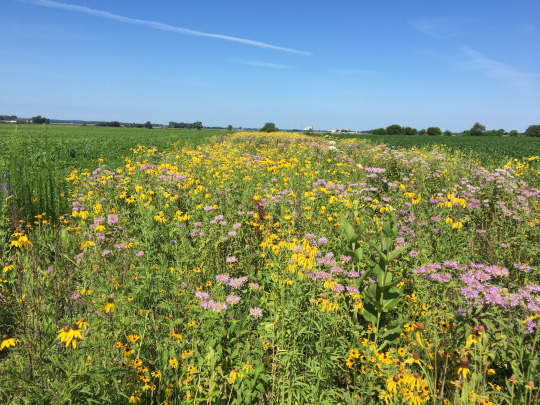
(Photo from Sand County Foundation. As a Midwesterner, I can literally SMELL this picture from my computer. It's amazing!)
Thus, a prairie, similar to the ones found in places like Illinois, Wisconsin, and Minnesota–some of the top producing farmland on Earth–is necessary for Medina Station and the colonies that it supports, to survive. This drier climate also allows for lesser amounts of rust and moisture to occur within the station, while the plants still allow for air to be properly filtered. Coincidentally, the aforementioned states are the homeland of the Anishinaabe/Ojibwe people, which will be discussed below.
Why a prairie? This comes out of my own background, with a brief panache of narcissism. As Naomi mentions in Sky Prairie, Part 4, having a prairie in lieu of trees makes sense (https://www.nationalgeographic.org/encyclopedia/prairie/#:~:text=The%20prairie%20grasses%20hold%20the,wheat%2C%20rye%2C%20and%20oats). The plants are more conducive to creating a richer and more complex soil, necessary for growing crops in space. Additionally, they can still produce a significant amount of oxygen and water, vital for life in this universe and beyond. Finally, by cycling the crops, including that of prairie grass, the soil can continue to be nourished in a fashion that will not exhaust it. This is another reason why cows are forbidden on Medina Station, and even smaller dairy ungulates, such as sheep and goats, are given a bit of side eye from the administration.
This is also a personal objective for myself, and should be addressed. I am a settler, but I was born, raised, and now live on the historic lands of the Anishinaabe/Ojibwe people, who have lived and worked in this ecosystem of mixed forest and prairie for thousands of years. Interestingly enough, Cara Gee (the actress who plays Camina Drummer) is of Ojibwe descent herself.

(Image from the Star Tribune)
Although it is not officially canon in the world of The Expanse, in my mind, the Drummer family is of Ojibwe descent themselves. I hoped this would be reflected in multiple aspects of this story. First, the professions of the women–where one is a healer (Tanke Drummer, a physician), one gathers plants (Sjael Drummer, a chemical engineer), and the other is the guiding spirit of her people (Camina Drummer, the president). All are fierce defenders and patriots of the Belt.
Taken from the Keweenaw Bay Indian Community (an Ojibwe community in the Upper Peninsula of Michigan): “Self-discipline, survival skills, loyalty, solidarity, and respect within family are above all individual interests”...a sentiment that is surely reflected in not only the Beltalowda, but amongst Clone Force 99 as well.
You may also find additional Anishinaabe/Ojibwe words and references throughout Far Past the Ring, such as the names of Camina and Tanke/Sjael’s fathers (‘Aki’ = Ojibwe for ‘Earth’ and ‘Anang’ = Ojibwe for ‘Star’), Tanke’s title amongst her family (‘Niimama’ = Ojibwe for ‘my mother’), and the eagle feather tattoos on the necks of those in the Drummer family who have served the people as either warriors or healers. Certain characters wear embroidery and flowers similar in the fashion of the Ojibwe people as well.
There could always be healthier representation of indigeneity within science fiction, and I would like to think I’m doing my best here.
Why are all the buildings made of stucco/adobe? I’d like to think Naomi Nagata does a good job of explaining this, but here’s some more detail.
Stucco is cheap and easy to make, and works very well in a dry environment, like Medina Station’s interior. As metal and plastic might not stand the climate within the station, stucco and adobe, made of the earth from the Hub itself, is a better material to use. Additionally, by being fireproof, it is a safer option to use when the fields need to have prescribed burns on them, a dangerous but necessary step that requires multiple hands on deck, with the watchful eye of Timon Chapelle on top of it all).
The structure’s design is not aesthetic in mindset, to be honest. The Hub is a nucleated settlement (https://en.wikipedia.org/wiki/Nucleated_village), made to not only save the most amount of room for farming and cultivating crops, but also to foster a better sense of community and continuity amongst the residents within.
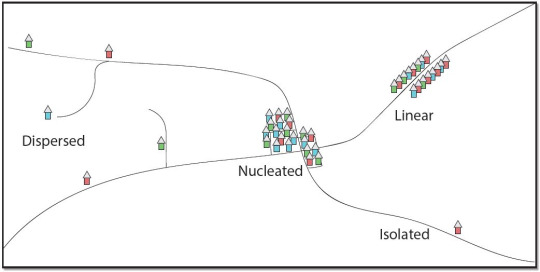
(Photo from https://opentext.wsu.edu/)
Ultimately, the Hub is envisioned to look like the Taos Pueblo (https://en.wikipedia.org/wiki/Taos_Pueblo), which, while not a prairie habitat per se (though those have existed–thanks Frank Lloyd Wright!) offers solid dwelling in terms of heating and cooling, ease of supply creation, and a more organic feel to housing that, for many Earthers, is assuring, and for Martians and Belters, a new experience that helps them reconnect with their Terran roots.
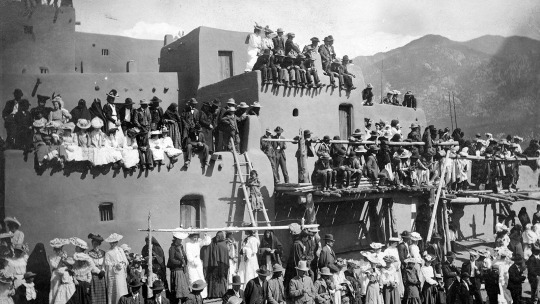
(Photo taken from WTTW Chicago)
The Ziyaret, meanwhile, is also constructed of adobe, but, due to the transitional nature of its residents, does not have the intense communal aspect of the Hub. Instead, it is a reflection of the Islamic roots of the term ‘Medina’, and the nature of movement in human history, making it resemble one of the many mosques and madrassas found within Mali (https://en.wikipedia.org/wiki/Djinguereber_Mosque), constructed as places of safe haven along a perilous trade route.
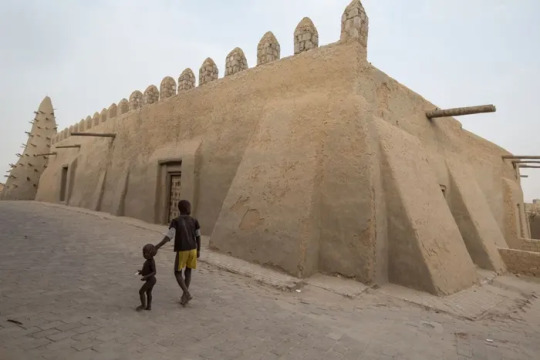
(Photo taken from The Guardian)
How does everyone move around? Methane and other gasses are a challenge to have in this type of environment due to the need to keep air pollution at a minimum. As a result, bicycles, skateboards, and other similar modes of transportation are strongly encouraged–a treat for Earthers and a confusing new mode for Belters and Martians! Additionally, this taps right into the independent spirit of the Belt–you do not need to beg for gas when you have a bike!
#fanfiction#science fiction#crossover#future living#the expanse#future homes#medina station#human geography#exoplanet
7 notes
·
View notes
Text
NEW EPISODE
Happy Wednesday!
The latest episode of 'the story pilgrim' #podcast is one close to my heart.
Nauvoo, Illinois: Quiet Reflections
Join me as I open up a little and share some personal stuff.
#podcast#storytelling#story#travel#new episode#podcaster#podcasting#nauvoo#mormon#the church of jesus christ of latter day saints#mormon temple#living museum
0 notes
Text
MORMON DEAR AMERICA/AMERICAN GIRL KNOCKOFF SERIES?
3 notes
·
View notes
Text
Serving in Nauvoo Homes and Shops
Elder Kevin and Sister Lou Dene Hunt are enjoying serving in Nauvoo homes and shops. We are pleased to be serving in Nauvoo as “Site Missionaries” in the Illinois Historic Sites Mission (that includes Nauvoo and Carthage). This is a great blessing and privilege. As noted earlier, Sister Hunt’s parents, Elder E.H. and Sister Verna Belcher served in Nauvoo from 1979 to 1981. They spent their…

View On WordPress
#Benjamin Bird Cabin#Brigham Young#Calvin Pendleton#Carthage Jail#Cultural Hall#Edward Hunter Home#Family Living Center#FamilySearch Center#Heber C. Kimball#Hiram and Sarah Granger Kimball Home#Jonathan Browning Home#Jones Stone Pavilion#Joseph Smith&039;s Homestead#Joseph Smith&039;s Mansion House#Joseph Smith&039;s Red Brick Store#Lucy Mack Smith#Nautoo Temple#Nauvoo animal rides#Nauvoo Brick#Nauvoo Carriage Ride#Nauvoo Homes#Nauvoo Post Office#Nauvoo Pring Shop#Nauvoo Restored Homes#Nauvoo Visitors&039; Center#Nauvoo Wagon Ride#Orson Hyde Home#Oxen Experience#Patty Sessions Cabin#Pioneer Pastimes
0 notes